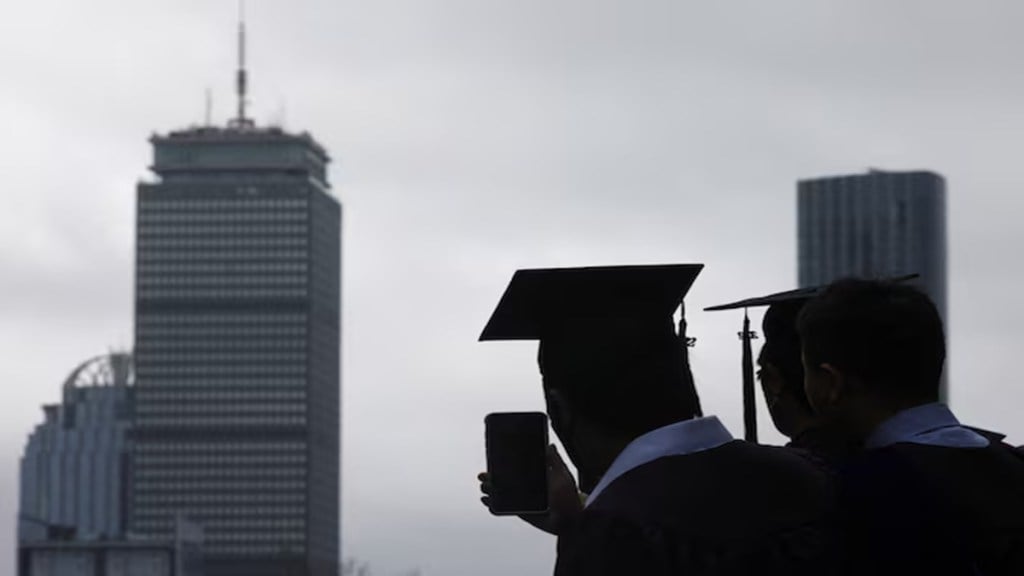The US is witnessing a growing opposition to the Optional Practical Training program, with lawmakers advocating for the termination of temporary work permits for foreign students.
The Trump administration is implementing stricter regulations and disincentives to discourage the OPT program, aiming to encourage US companies to employ American workers instead of foreign students holding F-1 study visas.
US lawmakers have introduced the ‘Fairness for High-Skilled Americans Act of 2025’ to eliminate the Optional Practical Training Program, unless Congress authorizes it. Representative Paul A. Gosar argued that the OPT program undercuts American workers by allowing employers to hire cheap foreign labor.
USCIS Director Joseph Edlow supports ending the Optional Practical Training (OPT) program, which permits foreign graduates to work in America post-study.
Jessica Vaughan, Director of Policy Studies at the Center, has proposed that Congress review visa categories, including Optional Practical Training, to determine the need for tighter management or elimination.
US lawmakers have also proposed to tax the earnings of international students in the Optional Practical Training program by reversing their current exemption from FICA taxes.
The biggest criticism of OPT is that the program was not established by the US Congress but was established through regulation. Critics also point out that the OPT program has become a large-scale temporary worker program without safeguards in place for protecting U.S. workers.
Opponents argue that OPT incentivizes US employers to hire foreign national graduates over US citizens due to exemptions from certain payroll taxes for OPT employees. Others believe it should continue or expand, as it benefits the U.S. economy and attracts skilled workers and students.
What is the OPT Program
Optional Practical Training program is a hugely popular job option for foreign students studying in the US. During their studies or after completing their studies, foreign students are allowed to take up jobs that help them get work experience in US companies.
OPT is essentially a temporary employment for foreign students and recent graduates in the United States in F-1 or M-1 non-immigrant temporary status, and the employment must be directly related to the student’s major area of study.
OPT Students Working in the US
Generally, an F-1 nonimmigrant may work up to 12 months in OPT, which may occur before and/or after graduation. Certain F-1 students who receive science, technology, engineering, and mathematics (STEM) degrees may apply for a 24-month extension of their post-completion optional practical training (OPT).
Participants in pre-completion OPT can work 20 hours or less per week during school hours, and full-time when school isn’t, while if you are authorized for post-completion OPT, you must work part-time, at least 20 hours per week, or full-time.
The current regulations allow F-1 students to participate in OPT after their first academic year, while M-1 students can participate after completing their study program, for up to six months of OPT after completing their program.
To participate, students must obtain school approval and file an employment authorization application with USCIS. There is no numerical limit on the number of F-1 or M-1 nonimmigrants, with 98%-99% of OPT participants in F-1 status.
STEM OPT employers must attest that any STEM OPT employee they hire is not replacing a U.S. worker and that the duties, hours, and compensation are commensurate with those for their U.S. employees. STEM OPT employers are required to use the E-Verify electronic employment eligibility verification system and submit a formal training plan that identifies learning objectives and a plan for achieving those objectives.
OPT to H-1B Process
OPT authorization is a quicker and easier way for foreign students to stay and work in the US after graduation, compared to limited and oversubscribed temporary or permanent employment-based immigration statuses like H-1B and Lawful Permanent Resident (LPR) or US Green Card.
OPT serves as a bridge for students on F-1 visas to transition to other immigration statuses, such as STEM OPT, which offers multiple chances of winning the annual H-1B lottery. It can also provide an interim status for recent graduates whose employers sponsor them for LPR status.
OPT for Foreign Students
In 2024, the US had 1.58 million F-1 and M-1 students and recent graduates, with 26.6%, or 418,000, authorized to work under OPT.
More than two-thirds of the OPT authorized population are citizens of Asian countries. From 2020-2024, the top 10 places of origin for OPT participants were India, China, South Korea, Taiwan, Nepal, Canada, Nigeria, Vietnam, Brazil, and Mexico. India and China accounted for 35% and 24%, respectively, while South Korea, the next highest country, accounted for 3%.
Nonimmigrants with OPT authorization are concentrated in STEM fields. More than a quarter (31%) of those authorized for OPT in 2024 majored in computer science, with another 18% in engineering.
Companies employing the largest numbers of OPT workers are large technology firms such as Amazon, Google, Microsoft, and Meta, and large university systems such as the University of California and Arizona State University.

